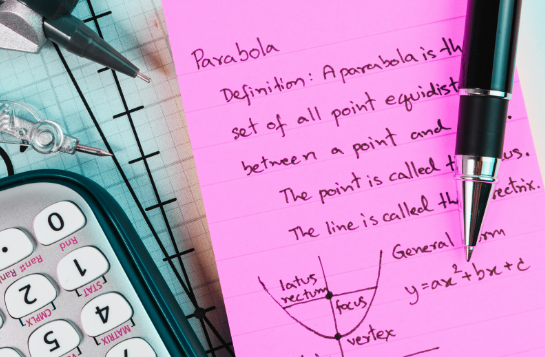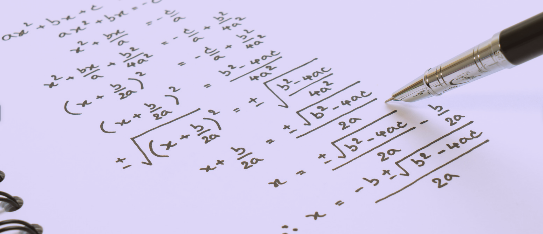
Are you stuck in the cycle of memorizing math formulas without truly understanding the underlying concepts? If so, you're not alone. Many students fall into the trap of rote learning, which can hinder their long-term success in mathematics. In this article, we'll explore the profound impact of understanding math concepts, using the example of quadratic equations, and how it can lead to improved math grades and exam scores.
The Pitfall of Formula Memorization
Let's begin by acknowledging a common approach to math education—formula memorization. While memorizing formulas may help you solve specific problems temporarily, it often falls short in fostering a deep understanding of the subject. You might ace a single test, but the knowledge might not stick for the long term.
The Power of Understanding: Quadratic Equations
To illustrate the transformative effect of understanding math concepts, let's delve into the world of quadratic equations.
Understanding Quadratic Equations:

A quadratic equation is more than just a formula; it's a fundamental concept in algebra. It represents a parabolic curve and embodies principles of mathematics that extend far beyond a single equation. Truly understanding quadratic equations involves grasping concepts such as:
1. Graphical Interpretation:
Visualize the parabolic shape of a quadratic equation and understand how its coefficients impact the graph's features. The 'a' coefficient determines whether the parabola opens upward (when 'a' is positive) or downward (when 'a' is negative). This visualization helps you connect the equation to a graphical representation.
2. Roots and Factors:
Comprehend the relationship between the roots (solutions) of a quadratic equation and its factors, including how to factorize it.
3. Completing the Square:
Learn how completing the square connects algebraic manipulation with geometric concepts.
4. Understanding the Quadratic Formula:

Instead of seeing the quadratic formula as a set of symbols to memorize, break it down step by step:
-) -b: This part represents the opposite of the coefficient of the linear term in the quadratic equation. It's there because when you solve a quadratic equation, you're trying to find where the parabola crosses the x-axis. The value of x where this happens is the solution you're looking for.
-) ±: This symbol accounts for the fact that a quadratic equation can have two solutions (cross the x-axis at two points), one solution (just touch the x-axis at one point), or no real solutions (the parabola doesn't touch the x-axis).
-) √(b² - 4ac): This is called the discriminant. It determines how many solutions the quadratic equation has and whether those solutions are real or complex. If the discriminant is positive, you have two real solutions. If it's zero, you have one real solution (a perfect square). If it's negative, you have two complex solutions.
-) 2a: This is simply the coefficient of the quadratic term, and it's in the denominator because you need to divide to isolate x.
5. Practice with Real Equations:

-) Apply the quadratic formula to actual quadratic equations. For example, consider the equation: 2x² - 5x + 3 = 0.
-) By understanding the components of the formula and visualizing the parabola, you can see that 'a' is 2, 'b' is -5, and 'c' is 3.
-) Now, plug these values into the quadratic formula: x = [-(-5) ± √((-5)² - 4(2)(3))] / (2(2))
-) Calculate the discriminant and solve for x, following the steps of the formula.
The Difference It Makes:

When you truly understand quadratic equations, several remarkable things happen:
1. Deeper Problem-Solving:
You become equipped to solve a wide range of problems involving quadratics, even those you haven't encountered before.
2. Enhanced Critical Thinking:
Understanding allows you to critically analyze and adapt your approach to unique situations, rather than applying a one-size-fits-all formula.
3. Long-Term Retention:
Concepts understood through comprehension tend to stay with you, benefiting you not only in the current exam but also in future math courses.
4. Improved Exam Performance:
With a solid understanding, you're better prepared to tackle a variety of questions that may appear on exams.
A Real-World Example:

Imagine you're faced with a quadratic equation in an exam. Instead of frantically recalling the quadratic formula, you understand the fundamental principles behind it. You recognize the graphical representation of the equation, visualize the roots, and analyze how the coefficients affect the parabola's shape. Armed with this comprehension, you confidently approach the problem, making connections and drawing insights that extend beyond the formula itself
The Key to Math Success
In the journey to better math grades and exam scores, understanding math concepts is your most potent ally. It's not about rote memorization but about unlocking the inner workings of mathematics. Start with quadratic equations and watch as your newfound understanding transforms your math education. As you embark on this path, remember that it's not just about solving equations; it's about understanding the beautiful and intricate language of mathematics. Embrace the challenge, and you'll find that math becomes not just a subject but a fascinating adventure waiting to be explored.


コメント